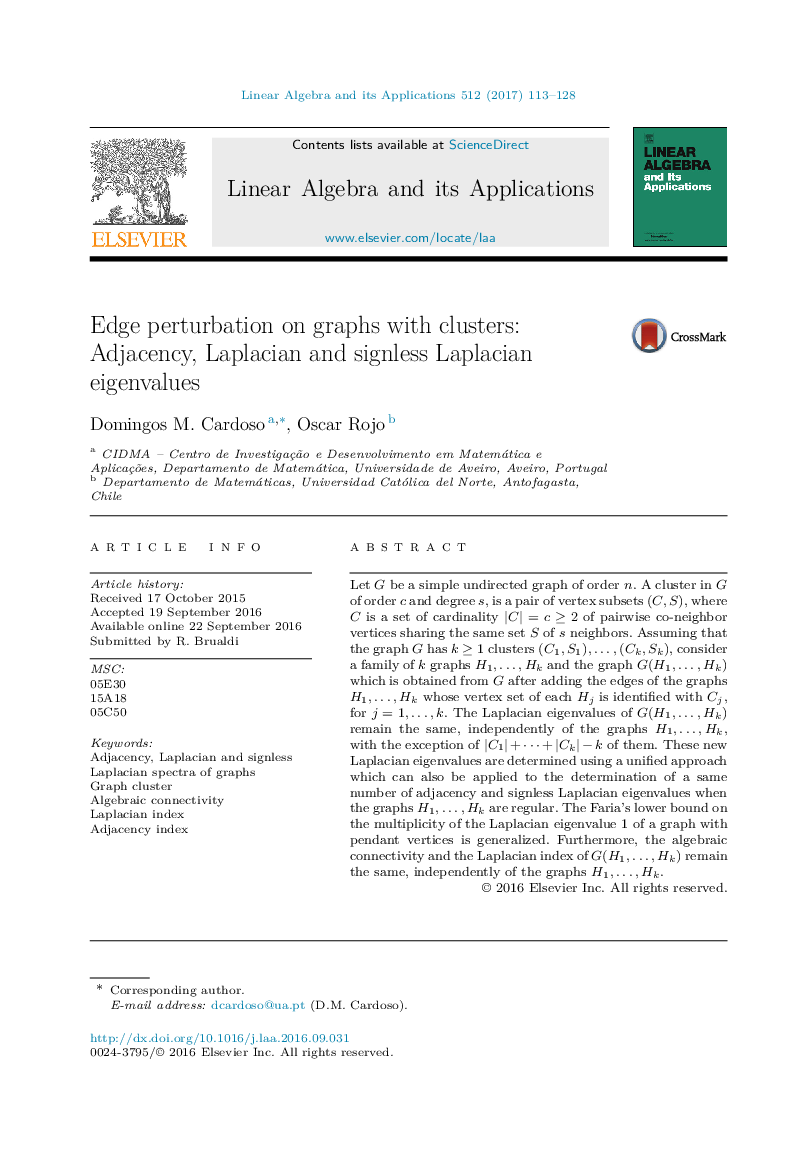| Article ID | Journal | Published Year | Pages | File Type |
|---|---|---|---|---|
| 4598398 | Linear Algebra and its Applications | 2017 | 16 Pages |
Let G be a simple undirected graph of order n. A cluster in G of order c and degree s , is a pair of vertex subsets (C,S)(C,S), where C is a set of cardinality |C|=c≥2|C|=c≥2 of pairwise co-neighbor vertices sharing the same set S of s neighbors. Assuming that the graph G has k≥1k≥1 clusters (C1,S1),…,(Ck,Sk)(C1,S1),…,(Ck,Sk), consider a family of k graphs H1,…,HkH1,…,Hk and the graph G(H1,…,Hk)G(H1,…,Hk) which is obtained from G after adding the edges of the graphs H1,…,HkH1,…,Hk whose vertex set of each HjHj is identified with CjCj, for j=1,…,kj=1,…,k. The Laplacian eigenvalues of G(H1,…,Hk)G(H1,…,Hk) remain the same, independently of the graphs H1,…,HkH1,…,Hk, with the exception of |C1|+⋯+|Ck|−k|C1|+⋯+|Ck|−k of them. These new Laplacian eigenvalues are determined using a unified approach which can also be applied to the determination of a same number of adjacency and signless Laplacian eigenvalues when the graphs H1,…,HkH1,…,Hk are regular. The Faria's lower bound on the multiplicity of the Laplacian eigenvalue 1 of a graph with pendant vertices is generalized. Furthermore, the algebraic connectivity and the Laplacian index of G(H1,…,Hk)G(H1,…,Hk) remain the same, independently of the graphs H1,…,HkH1,…,Hk.
